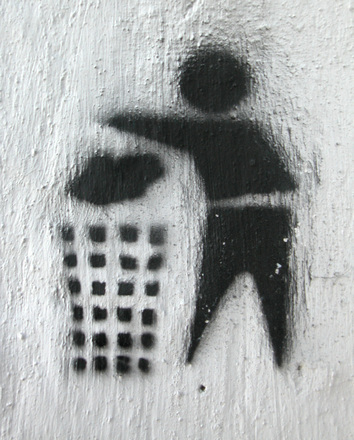

SEVERAL months ago we wrote that software patents had become pretty toothless everywhere except the Eastern District of Texas, where judges continue to exploit their own governance to welcome patent trolls. Nowadays, just because the USPTO occasionally grants software patents does not necessarily mean that courts (more so the higher ones) will respect them. Recent experiences and even a census (2016 statistics) serve to show that lawsuits with software patents have become a very risky game to play (the plaintiff typically loses not only the case but also a lot of money, which law firms pocket in the process).
"Recent experiences and even a census (2016 statistics) serve to show that lawsuits with software patents have become a very risky game to play (the plaintiff typically loses not only the case but also a lot of money, which law firms pocket in the process)."Law firms that used to make a lot of money from software patents are concerned. They need their clients to become dumb or poorly informed. Yesterday we saw a new article, which was unsurprisingly (given the authorship) entitled "Software Is Still Patent Eligible", published by Sandra Badin, Matthew Karambelas, Nick Mouton, Michael Renaud, and Michael D. Van Loy (Mintz Levin). This is poor advice from a self-serving firm which is just trying to sell its services around software patents. These patents may seem eligible at the US patent office, but how about in District Courts? Or even worse: CAFC? SCOTUS was very clear about it.
Not even District Courts like the Eastern District of Texas' can provide much of a reprieve, at least not for much longer because SCOTUS has Texas in its crosshairs. Writing about TC Heartland -- the case that can effectively kill patent trolls later this year (their modus operandi would be shattered) -- Professors Megan M. La Belle & Paul R. Gugliuzza wrote yesterday that "[p]atent litigation is, as we all know, [has been] highly concentrated in a small number of districts. Most notably—some might say, notoriously—the rural Eastern District of Texas hears about forty percent of all patent cases nationwide. Many lawyers and scholars consider this case concentration to be a critical flaw in the patent system."
"The environment for patent bullies is rapidly changing and those who assisted such bullies (law firms that pursue patents by the millions) will need to find another business tactic."Putting aside Alice and the Bilski case, the few courts that actually disregard precedential rulings may soon be out of business (not literally, but they will have to shrink significantly) and what will proponents of software patents have left to say?
The environment for patent bullies is rapidly changing and those who assisted such bullies (law firms that pursue patents by the millions) will need to find another business tactic. Fitbit is already withdrawing from its own patent case (which it initiated) and laying off a lot of its staff; they deserve it for resorting to patent aggression rather than innovation. Don't expect law firms to accept this new reality, as long as they can continue to mislead prospective clients.
In spite of Fitbit deciding to abandon its own case -- a fact that Bejin Bieneman PLC's site (a software patents proponents' site) conveniently omits -- here is a new anti-Alice post [via], published only yesterday, to paint just ponies and rainbows. To quote:
Fitbit sued Jawbone, its rival, alleging infringement of three patents directed to preparing wearable activity trackers with client and/or server computers, whereupon Jawbone unsuccessfully brought a Rule 12 motion to dismiss alleging patent-ineligible subject matter. Fitbit, Inc. v. AliphCom, No. 15-cv-04073-EJD (N.D. Cal. Feb 9, 2017.) The asserted patents were U.S. Patent Nos. 9,026,053, 9,106,307, and 9,048,923; “[a]ll of the asserted claims recite a method or system for pairing that involves three discrete entities: a portable monitoring device, a ‘client,’ and a ‘server.’” Skirting the question of whether claims were directed to a patent-ineligible abstract idea, the court found that the claims recite an inventive combination of elements.